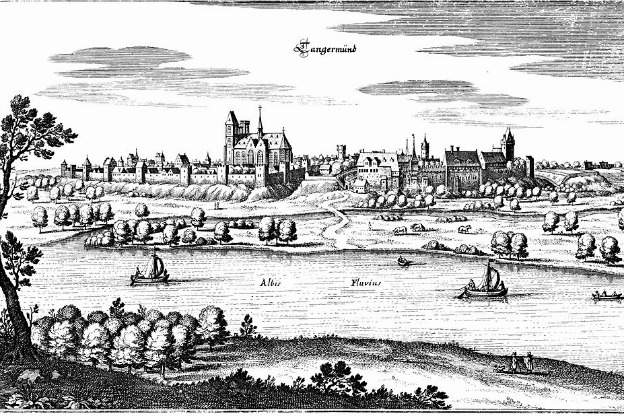
Father and Son
Joseph Kelemen has dedicated his career to historical organs, focusing much of his attention on performing German organ music of the seventeenth century. A 2014 release on Oehms Classics presents Kelemen and German organ music, and a fabulous historical instrument in works by father and son composers Hieronymus and Jacob Praetorius.
Just for clarification, the Praetorius family of musicians in question here are unrelated to Michael Praetorius. The Syntagma musicum, Polyhymnia, Terpsichore guy is someone else who just happened to have the same last name.
Hieronymus Praetorius
Hieronymus Praetorius was born in 1560 in Hamburg to a musical family. Trained by his father, Hieronymus eventually inherited his dad's post as the organist at St James' Church.
Hieronoymus was well respected in the Hamburg musical community, and in 1611 several of his works were collected into the Visby Tabulature compilation. The three hymns and magnificat setting attributed to Hieronymus on this recording all come from that 1611 Visby Tabulature. The hymns and magnificat are all similar in that they employ a chorale melody as a cantus firmus over which an ornamented descant part develops.
Scherer Organ
The sound of the organ that Kelemen plays is the highlight of this recording. This instrument is the Scherer Organ and it is located at the Church of St. Stephan in Tangermünde. The organ is the only one of its size from this place and time that still exists in a playable state. The original builder of this 17th-century organ was Hans Scherer, an instrument builder and repairman who coincidentally also maintained and updated the organ that Hieronymus Praetorius used at St. James' Church in Hamburg.
The Tangermünde Scherer organ has over 32 stops, three manuals, and pedals. Remarkably, half of the pipework and the carved casing have, through all the intervening years, remained in their original form. The parts that needed restoration were redone in 1983 and 1984, but even then, only a very few registers needed total reconstruction.
Jacob Praetorius
Besides keeping up with Hieronymus' organ at St. James, Hans Scherer also serviced and updated the organ at St. Peter's, where Hieronymus's son Jacob Praetorius was organist.
Jacob's compositions were very likely inspired by his instrument, and by extension the organ builder-restorer's sound concept. A cursory look through Jaocb Praetorius' surviving organ works, and you'll see that must of what he wrote specified two or three keyboards plus pedals, thus requiring a large instrument like the Tangermünde organ.
Before landing his lifetime tenure as organist at St. Peter's, Jacob Praetorius studied the organ in Amsterdam with Sweelinck. Later, Jacob himself became a sought after organ teacher. Berendt Petri, the person who compiled the Visby Tabulature of 1611 from which much of the music on this CD comes, was in all likelihood one of Jacob's students.
Jacob Praetorius' organ Magnificat Tertii Toni borrows from his father's own magnificats in the Visby Tablature. A note about the registration: it's called the "cornett registration" and is a historical registration originating with Sweelinck, set down in writing in 1655. And, one other little tidbit about this particular magnificat is that in 1700, parts of it were trimmed off and used to stuff and seal the bellows of an organ in Denmark. It wasn't rediscovered until 1964 when that organ was restored. Thankfully, the the missing parts of the music were likewise restored by the musicologist Michael Belotti. The version on this recording is based on this reconstructed version of the piece.









